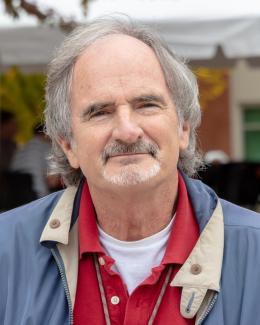February 20, 2014 - Former Energy Secretary Steven Chu mixed his Wigner Distinguished Lecture on Feb . 12 with a description of his current research at Stanford and his outlook on energy policy and climate change.
Chu is unequivocal about the reality of climate change. "The globe is warming up," he said. Weather-related natural disasters are on the increase, and even insurance losses don't accurately measure the damage because business closings, weatherization measures and flood insurance costs add up to billions that aren't captured in payouts.
One of the challenges in climate change policy is the lack of immediacy in climate change effects. Carbon-dioxide put into the atmosphere today, for example, will manifest itself in higher temperatures decades later.
Chu compared the lag in carbon consequences with cigarette smoking, displaying a chart showing growth in cigarette smoking juxtaposed with a nearly identical curve in lung cancer deaths two and three decades later.
"The damage we do today won't be seen for 50 years," he said, alluding to a slow but inevitable and injurious process.
Or, more starkly, he compared current energy practices to a game of Russian Roulette, with the pistol aimed at the knee: "Except we add a bullet every 10 years and pull the trigger."
Compounding the climate situation is technical progress in retrieving fossil fuels, enabling supply to keep up with oil and gas demand. "We are doing well at learning to extract gas and oil. And if we continue to get to all the gas and oil, we'll be cooked," he said.
Technology is delivering good news, nevertheless. Carbon sequestration technologies and strategies are progressing. He cited improvements in appliance energy efficiency that has lowered their prices and increased their sales and use, and similar progress with batteries. He mentioned the use of GPUs in supercomputers as a leap in energy efficient computing, which the potential to cut energy use at a scale of 30 watts to 1 watt or less.
"Flops per watt is a measure of success," Chu said.
The Nobel Prize winner is currently collaborating with other scientists on biomedical imaging -- IR absorption spectrography -- at angstrom resolutions toward treatment strategies against cancers and bacterial disease. Chu described work that could lead to effective measures against bacterial biofilms -- colonies of bacteria protected by protein fortresses -- to reduce their resistance to treatment, and new knowledge on how cell signaling relates to cancer.
Chu's recent work is so cutting edge and sweeping in scope that publications frequently struggle in the peer review process. He cited several during the talk that had been declined by journals, at least initially.
"I have the distinct honor of having papers rejected in more disciplines than anyone in the world," he said toward the end of the talk.
The Eugene P. Wigner Distinguished Lecture Series resumes with Dr. John Holdren, director of the Office of Science and Technology Policy at The White House, on Thursday, March 13.
See a video of the talk on YouTube.


